11+ Steps to Create a 6-Month Overall SEO Plan for New Businesses
|
Table of Contents: |
Effective SEO plan is the key to helping your website breakthrough and attract attention from traffic giant nature. So how effective is the overall SEO planning process? What is the Google SEO planning method? How to optimize the overall SEO plan? In the article below, MAU Agency will help you learn in detail about the 11+ steps of establishing an SEO plan for Website in 6 months for new businesses.
Definition of SEO and SEO Plan
What is SEO?
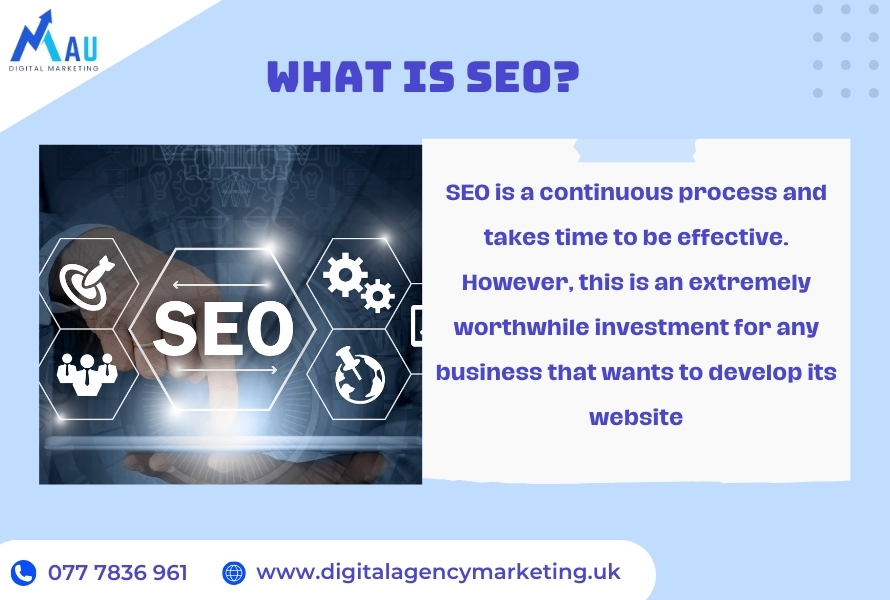
SEO stands for Search Engine Optimization. This is a set of techniques to optimize a website so that it can appear in a higher position in the search results of search engines such as Google, Bing, Yahoo,...
According to author Jami Oetting, in the article “The Ultimate Guide to SEO in 2023” on Hubspot.com:
“SEO is a continuous process and takes time to be effective. However, this is an extremely worthwhile investment for any business that wants to develop its website."
What is an SEO plan?
Also on Hubspot, in the article How to Create an SEO Strategy for 2023, author Drew Fortin said:
“An SEO plan is simply a document that describes the specific steps and strategies you will take to optimize your website for search engines.”
How long does it take for an SEO plan to show results?
It can take you from 6 months to 1 year for your SEO plan to achieve clear results. However, SEO performance also appears in the first 3 months if the SEO plan strictly follows the following 8 rules.
If you are a Nails salon owner in the US market, and there is a need to implement a comprehensive SEO plan, then you should apply 8 specific rules as follows:
Rule 1: Keyword research:
For example: Find out which keywords potential customers search for Nail services with.
Rule 2: Website design:
A website that loads quickly and has a user-friendly design will inspire you to "add to cart" and stay to see more of your services. The Nail website is simple, easy to use, loads quickly, and is beautiful.
The nail industry's website structure needs to have the following items:
-
Homepage
-
Services
-
Booking
-
Price list
-
Advice corner (Tips & Advice)
-
Contact information
-
Images (Gallery)
-
Customer Area
-
…
Rule 3: Posting frequency:
Frequency contributes to showing the professionalism of the Website in the eyes of Google Bot. Therefore, product content, Nails knowledge sharing, etc. must be updated regularly and diversely (images, video clips, sharing articles, customer interviews, etc.).
Rule 4: The close relevance of the content throughout the website:
Simple content can help a website attract tens of thousands of organic traffic.
Case study example of Svalbardi - drinking water brand. The brand has applied Topical Map with only 27 articles that are closely linked to all aspects of "Bottled Drinking Water". Svalbardi has successfully surpassed the long-standing website in the industry, Healthline, and attracted attention.
In addition, you should also consider other factors, including:
Rule 5: Level of market competition:
If you are operating in a highly competitive market, it will take you longer to achieve SEO results.
For example: The level of competition in the US nails SEO market is quite high:
-
There are many competitors, especially for general keywords.
-
Reputable websites have great advantages in website quality and backlinks.
Specifically:
-
General keywords: "nail salon", "nail art", "nail designs" have high search volume (more than 100,000 searches per month). High competition, many big competitors such as Yelp, Google Maps, famous nail brands.
-
Specific keywords: "nail salon near me", "ombre nails", "acrylic nails" have average search volume (10,000 - 100,000 searches per month). Average competition, can compete with local nail salons, beauty bloggers.
Rule 6: Website quality:
If your website has good content and quality backlinks, you will see faster SEO results.
Rule 7: SEO Efforts:
If the SEO roadmap is 6 months. Business owners must determine the exact time for each stage. For example:
+ The first 2 months focus on Onpage SEO
+ The next 2 months implement Offpage SEO
+ In the last 2 months, check and make adjustments.
In particular, you must set specific tasks for each day and must thoroughly complete at least 80% of that day's tasks.
Rule 8: Google Algorithm:
The time for Google algorithm updates will be from .... to .... / times. For detailed information about updates, you can refer to here.
This is the accumulated experience from more than 20 SEO projects that MAUAgency has cooperated with.
All knowledge will be shared by the MAU Agency team in the next Blog articles! Let's look forward to it!
Revealing The Optimal Overall SEO Planning Process With 11 Steps
Below are 11 important steps that service Google SEO optimization instructions at MAU Agency want to introduce to you.
Step 1: Check 5+ main factors to evaluate the website
Checking the general "health" of the Website is the Top 1 priority before implementing all SEO activities. There are 5+ factors that SMEs business owners need to pay special attention to during the overall website inspection process. Detail:
1. Page loading speed:
-
Page loading speed under 3 seconds is SEO standard.
-
You can refer to and analyze page loading speed here PageSpeed Insight.
2. URL structure:
-
The URL structure is concise, easy to understand, contains main keywords, helps Google and users understand the website content.
-
Avoid using URLs that are long, contain special characters, or are unrelated to the site content.
3. Sitemap:
-
A sitemap is an XML file that lists all of your web pages, helping Google crawl and index your website effectively.
-
Submit sitemap to Google Search Console so Google knows and crawls your website.
4. User responsiveness.
-
The website needs to have a friendly design, easy to use, and smooth navigation on all devices.
-
Website content needs to be quality, useful, attractive and retain users.
5. Mobile compatibility:
-
More than 50% of website visits come from mobile devices. Therefore, the website needs to be optimized for mobile.
-
Use responsive or AMP design so the website displays well on all devices.
In addition to the above 5 factors, SMEs business owners also need to pay attention to:
-
Website content: Provide quality, useful content related to the business's products/services.
-
Backlink: Build quality backlinks from reputable websites to increase website rankings on Google.
-
On-page SEO: Optimize the website for on-page SEO by using appropriate keywords in the title, meta description, and website content.
-
Website security: Use HTTPS and other security measures to protect your website from attacks.
-
Track and analyze website performance: Use Google Analytics to track website traffic, user behavior and SEO strategy effectiveness.
Step 2: Find keywords, research the topic
Finding keywords and understanding the topic will be basically as follows:
- Understand the company: What are the company's main products? SEO cannot do too many product categories at once.
- Understand customers: Business owners will draw a perfect customer portrait with Customer Journey Mindmap and Customer Analysis. You will collect data about customers, including:
-
Demographic data (age, gender, income, etc.)
-
Customer needs and wants
-
Customer behavior
-
Customer pain points
- Understand the tool: Customer Journey Mindmap (CJM) is a useful tool to help you understand the customer journey, from awareness of the product/service to purchase and after purchase. Applying CJM to SEO is an effective way to attract potential customers, increase conversion rates and improve SEO effectiveness.
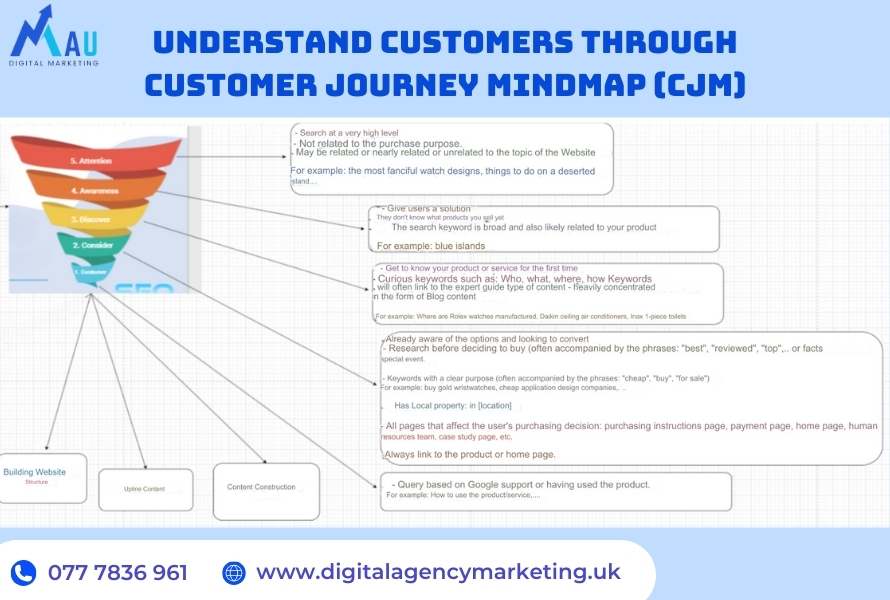
Step 3: Research and classify keywords
Step 1: Type the main keyword: on the SEMrush tool, in the "Keyword Magic Tools" section, select the Phrase Match section to see the full set of keywords in your industry.
Step 2: Export that keyword set and group keywords. To group effectively, business owners are required to classify keywords to know exactly what type of keywords customers need.
Below are 4 important keyword types in nail industry website SEO:
1. Main keywords: are the most general and comprehensive keywords about the nail industry. For example:
-
Manicure
-
Pedicures
-
Beautiful nails
-
Nail shop
-
Nail samples
2. Secondary keywords: are more specific, more detailed keywords about the nail industry. For example:
-
French manicure
-
Gel pedicure
-
Nails with stones
-
Cheap nail salon
-
Nail designs for the bride
3. Keywords by geographical location: are keywords that include the geographical location of the nail salon. For example:
-
Get beautiful nails in Texas
-
Cheap nail salon California
-
Beautiful Florida nail designs
4. Seasonal keywords: are keywords that have a high search trend at a certain time of the year. For example:
-
Christmas nail designs
-
Tet manicure
-
Nail designs for summer
Step 3: Keywords that share the same Search Intent will be put into a group.
For example: Sort keywords by service group (manicure, pedicure), by region (Texas, California, Florida), by price (economy, luxury),...
Step 4: After you have each detailed set of keywords, start relying on Customer Journey MindMap and Customer Analysis to arrange the order of the keyword sets.
For example, the Nails industry will often focus on the Discover and Consideration stages - keywords will imply "where", "best", "reviews" or special events -> have discount codes - > towards beauty services.
Step 5: After you have a set of keywords, you proceed to make a detailed outline for each set of keywords. The outline must meet the reading journey and cover the entire knowledge of the keyword. MAU Agency suggests the extension "SEO Meta in 1 CLICK" to refer to the Outline of your competitors' articles to form ideas for your own articles! Note that you cannot copy or plagiarize because you will be subject to a very heavy penalty from Google.
Step 4: Analyze competitor websites
Steps to find opponents
In terms of SEO, customers can identify their direct competitors in the following 3 ways:
-
Step 1: Search your business's main product keywords on the search bar.
-
Step 2: Choose the Top 3 - 5 websites ranked first. Note, you must choose websites that have the same Source Context (Content Topic) as your website.
-
Step 3: Conduct a detailed analysis and research of all SEO aspects of your competitor's website the same way you did on your website!
Steps to analyze competitors
If the business owner does not have much experience in checking the characteristics of competitors in terms of SEO, MAU Agency will suggest you 4 important Onpage aspects:
- Research interface and design
-
Is the interface of your competitor's website beautiful, attractive and easy to use?
-
Is your competitor's website responsive?
-
What is the page loading speed of your competitor's website?
-
Is the structure of your competitor's website clear and easy to navigate?
- Research about websites:
-
What is the page loading speed of your competitor's website?
-
Is the URL structure of your competitor's website SEO friendly?
-
Does the competitor website have sitemap.xml and robots.txt?
-
Are the meta title and meta description of the competitor website complete and accurate?
-
Does your competitor's website use high-quality photos and videos?
- Keyword research:
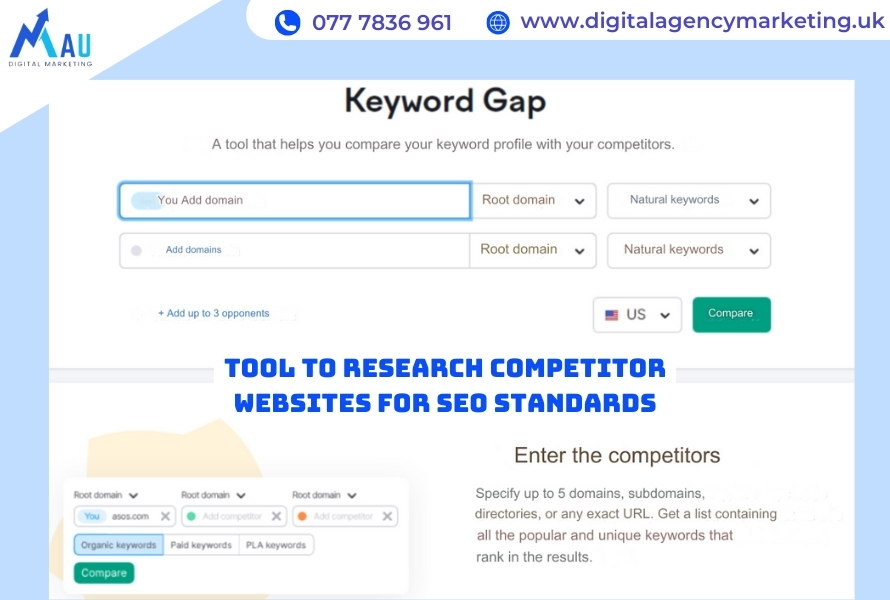
-
What keywords are your competitors using?
-
How are competitors ranking for those keywords?
-
What keywords can you use that your competitors aren't using?
- Content research:
-
What is the quality of your competitor's website content?
-
Is the content of your competitor's website updated regularly?
-
Is the content of your competitor's website unique?
-
How do competitors use keywords in website content?
Tool to research competitors
To analyze your competitors in more detail, you can use tools like Ahrefs, SEMrush, Moz, or SpyFu.
Instructions for using Ahrefs to check your competitors' websites:
1. Create an Ahrefs account:
-
Visit the website https://ahrefs.com/.
-
Choose the subscription plan that suits your needs.
-
Create an account and log in to Ahrefs.
2. Enter your competitor's website URL:
-
In the Ahrefs search bar, enter the URL of the competitor's website you want to check.
-
Press Enter or click the "Search" button.
3. Data analysis:
Ahrefs provides a wealth of data about your competitors' websites, including:
-
Backlink: Quantity and quality of backlinks of the website.
-
Keywords: Keywords that the website is ranking for on Google.
-
Traffic: Amount of website traffic.
-
Content: Quality of website content.
You can use this data to:
-
Identify the strengths and weaknesses of your competitor's website.
-
Create an effective SEO plan for your website.
-
Look for opportunities to compete with competitors.
Step 5: Measure your website with the tools
Uses and benefits of website measurement tools help Google understand that you are doing SEO correctly:
1. Google Search Console:
-
Helps you monitor and fix SEO errors on your website.
-
Provides data about the website's ranking position on Google for certain keywords.
-
Helps you identify websites that are linking to your website.
2. Google Analytics:
-
Helps you track website traffic, user behavior and the effectiveness of marketing campaigns.
-
Provides data about keywords that users use to search for your website.
-
Helps you identify which web pages are most effective and need improvement.
3. Ahrefs:

-
Helps you research keywords, analyze backlinks and track website rankings on Google.
-
Provide data about your competitors.
-
Helps you build an effective SEO strategy.
4. SEMrush:
-
Helps you research keywords, analyze backlinks, track website rankings on Google and research competitors.
-
Provides data on the latest SEO trends.
-
Helps you build an effective SEO strategy.
Step 6: Estimate budget, personnel, and work
Divide the project plan into content
Determine the budget and resources needed to create quality content and attract readers. Typically, this budget will include: the cost of hiring a content writer, designer or content editor.
For example: Estimate costs for SEO tools, SEO personnel, advertising costs,... appropriate to the scale of the nail salons 10 employees in the US:
1. Cost of SEO tools:
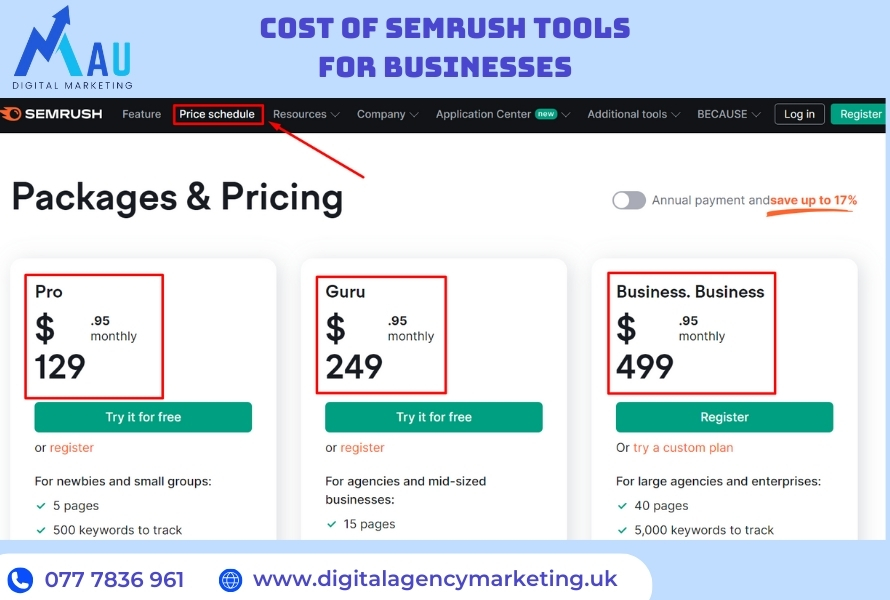
-
Basic SEO tools: Ahrefs, SEMrush, Moz, Google Search Console (free).
-
Keyword research tools: Keywordtool.io, Ubersuggest (free), Long Tail Pro.
-
Website optimization tools: Yoast SEO, SEMrush SEO Writing Assistant.
-
Rank tracking tools: RankRanger, SERPWatcher.
Total cost for SEO tools:
-
Free: Ahrefs, SEMrush, Moz, Google Search Console, Keywordtool.io, Ubersuggest.
-
Pay: Long Tail Pro, Yoast SEO, SEMrush SEO Writing Assistant, RankRanger, SERPWatcher.
2. SEO employee costs:
-
Full-time SEO employee: $3,000 - $5,000/month.
-
Part-time SEO employee: $1,500 - $2,500/month.
-
SEO service: $500 - $2,000/month.
Total cost for SEO personnel: Depends on the needs and budget of the nail salon.
3. Advertising costs:
-
Google Ads advertising: $100 - $500/month.
-
Facebook Ads: $50 - $200/month.
-
Instagram Ads: $50 - $200/month.
Total cost for advertising: Depends on the nail salon's needs and budget.
Estimated overall SEO costs:
-
Free: $0.
-
Paid: $500 - $5,000/month.
Note:
-
SEO costs can vary depending on many factors, such as nail salon size, geographical location, level of competition, SEO strategy,...
-
You should use free SEO tools before investing in paid tools.
-
A clear and effective SEO plan is needed to get the best results.
Go Backink
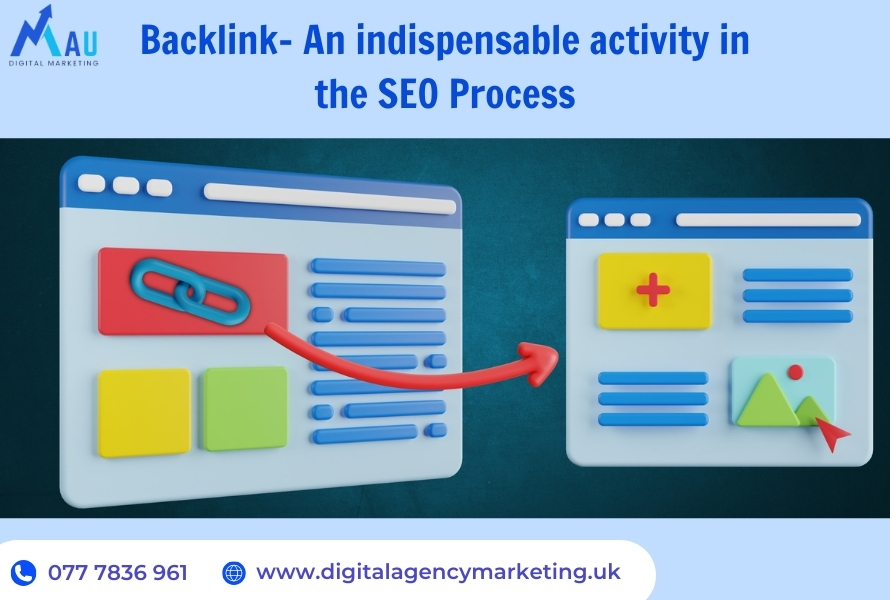
How to select, classify backlinks and create backlinks effectively:
1. Choose backlinks:
-
Quality: Backlink must come from a reputable website, related to your website and with high traffic.
-
Diversity: Backlinks should come from many different websites, should not focus on a single website.
-
Anchor text: Anchor text should contain the keyword you want your website to rank for.
2. Backlink classification:
-
Dofollow: A dofollow backlink is a backlink with the "rel=dofollow" attribute, allowing Google to transmit PageRank to your website.
-
Nofollow: A nofollow backlink is a backlink with the attribute "rel=nofollow", which does not allow Google to transmit PageRank to your website.
3. How to get backlinks:
-
Guest blogging: Write guest blog posts on reputable websites and insert backlinks to your website.
-
Social media: Share your website content on social networks and insert backlinks to your website.
-
Forum posting: Participate in forums related to your website and insert backlinks to your website.
-
Directory submission: Register your website to reputable directories.
-
Press release: Write a press release about your website and insert backlinks to your website.
Note:
-
Avoid buying backlinks: Buying backlinks can cause your website to be penalized by Google.
-
Get backlinks naturally: Avoid getting too many backlinks in a short period of time.
-
Track backlink effectiveness: Use SEO tools to track backlink effectiveness.
Increase Traffic
Identify traffic-boosting strategies such as paid advertising, social sharing, and email marketing.
Budget allocation
Allocate budget thoughtfully and flexibly between different SEO activities to ensure optimal effectiveness.
Step 7: Formula for writing optimal sales articles
How to set the title
Optimize the article title with the main keyword, trying to impress readers at first sight. A catchy title that contains your main keyword can increase your chances of attracting readers and improve your search engine position.
For example, nail salon owners can use the following titles to attract readers:

"The most beautiful nail designs with the most shares on social networks"
"The secret to beautiful nails of Vietnamese hot girls"
"Let's explore the latest nail trends of 2024"
How to deploy article content
Use keywords naturally in content, create quality and engaging content to attract readers' interest. Articles should provide useful information, bring value to readers, and be optimized for sharing and engagement.
For example: Article: Top 10 most beautiful nail designs of 2024
Revealing 10 beautiful nail designs of 2024 in a certain order (for example: by style, by season, by event...).
The secret to owning beautiful nails
-
Share some tips to choose a nail design that suits your hands, skin color, outfit...
-
Instructions on how to care for your nails to keep them beautiful and durable.
-
Suggest some reputable nail salon addresses.
Step 8: Onpage optimization
Optimizing on-page elements such as titles, descriptions, URLs, and images to increase a page's chances of ranking on search engines is an effective way. Digital SEO Marketing optimization service at MAU Agency usually applies. To do that, you can use keywords in meta tags, optimize images to increase page loading speed, and improve page structure.
Onpage optimization is a continuous process and takes time to be effective. Detail:
1. Content optimization:
-
Quality content: Provide useful, unique and relevant content to users.
-
Keywords: Use appropriate primary and secondary keywords in the title, meta description, article content and image alt text.
-
Structure: Use headings (H1, H2, H3...) to summarize the content and help Google clearly understand the article structure.
-
Paragraphs: Divide the article into short, easy-to-read paragraphs.
-
Images: Use high quality images that are relevant to the article content.
-
Video: Add video to increase the appeal of the article.
2. Technical optimization:
-
Page loading speed: Optimize page loading speed to bring the best user experience.
-
Responsive: Ensure the website displays well on all devices.
-
Sitemap.xml: Create sitemap.xml to help Google crawl your website more easily.
-
Robots.txt: Use robots.txt to adjust how Google crawls your website.
-
Internal link: Use internal links to link websites together.
-
External link: Use external links to link to other reputable websites.
3. Optimize website for social networks:
-
Meta description: Write attractive meta descriptions to attract users to click on the website from social networks.
-
Social media sharing buttons: Add social sharing buttons for users to easily share website content.
-
Social media cards: Use social media cards to display beautiful website content on social networks.
4. Monitor and improve:
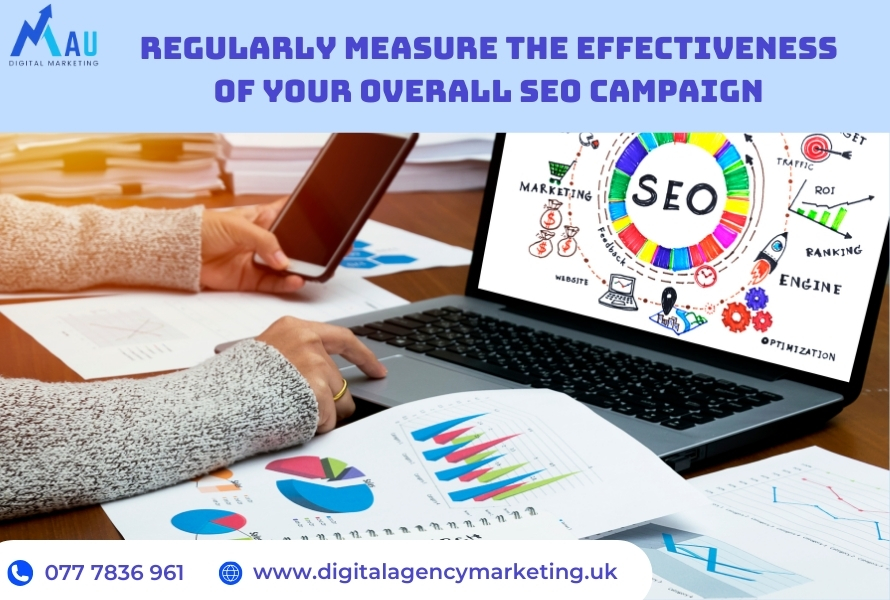
-
Use SEO tools to monitor the SEO effectiveness of your website.
-
Update website content regularly.
-
Improve the website based on collected data.
Step 9: Optimize conversion rate
Optimize landing pages to increase conversion rates from traffic to customers or leads. This process includes: improving the user interface, optimizing forms, calls to action and providing compelling, convincing content.
Step 10: Link, increase views and content
Build quality backlinks from reputable websites, increase traffic through sharing content on social networks, forums, blogs and other channels. This is a step that helps increase your website's credibility and improve its search engine position.
Step 11: Regularly measure effectiveness.
Continuously monitor and measure the effectiveness of your SEO campaign through measurement tools, such as Google Analytics and Google Search Console. From the information collected, you can easily adjust and improve your strategy. Perform periodic audits to evaluate progress, identify strengths and weaknesses, and adapt to changes in the SEO environment.
4 Core Goals And 2 Main Types of SEO
SEO targets 4 core goals, helping a business's website improve its position at the top of Google. As follows:
Increase website visibility
When SEO optimized, your website will rank higher on search results pages (SERPs), such as being in the top 10 on Google.com for keywords related to the Nail industry. Thanks to that, users will visit your website more, increasing the chance of converting into actual customers.
Important website metrics that website owners need to pay attention to:
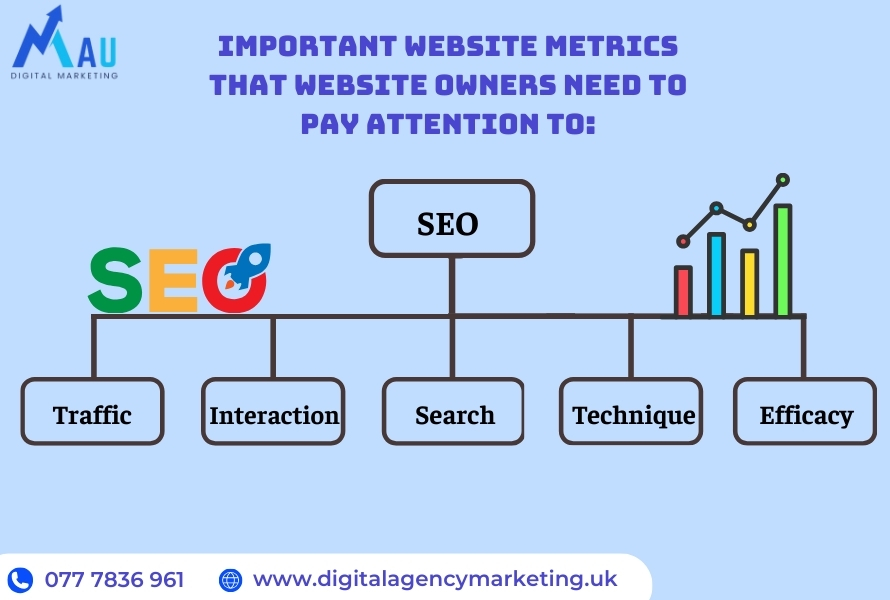
1. Traffic:
-
Number of visitors (Users): Indicates the number of people accessing your website in a certain period of time. It depends on the goal and type of website, but in general, the website should have a stable amount of traffic and gradually increase over time.
-
Number of sessions: Indicates the number of user interactions with your website in a certain period of time. This index should be higher than the number of visitors.
-
Pageviews: Shows the total number of times all pages on your website were viewed in a certain period of time. This index should be higher than the number of sessions.
-
Bounce Rate: Indicates the percentage of users who visit a website and immediately leave without interacting with any other pages. This index should be lower than 50%.
2. Interaction:
-
Average Time on Page: Shows the average time users spend on each page on your website. This indicator should be higher than 2 minutes.
-
Conversion Rate: Indicates the percentage of users who perform the desired action on your website, such as making a purchase, signing up for a newsletter, etc. Depending on the goal and type of website, but in general, conversion rates should be higher than 1%.
3. Search:
-
Organic Traffic: Shows the number of people accessing your website from natural search results on search engines like Google. This index should gradually increase over time.
-
Keyword Ranking: Indicates where your website appears in search results for certain keywords. This index should be as high as possible.
4. Technical:
-
Page Loading Speed: Indicates the page loading speed of your website. Should be under 3 seconds.
-
Mobile Friendliness: Indicates how friendly your website is with mobile devices. Website should display well on all mobile devices.
5. SEO effectiveness:
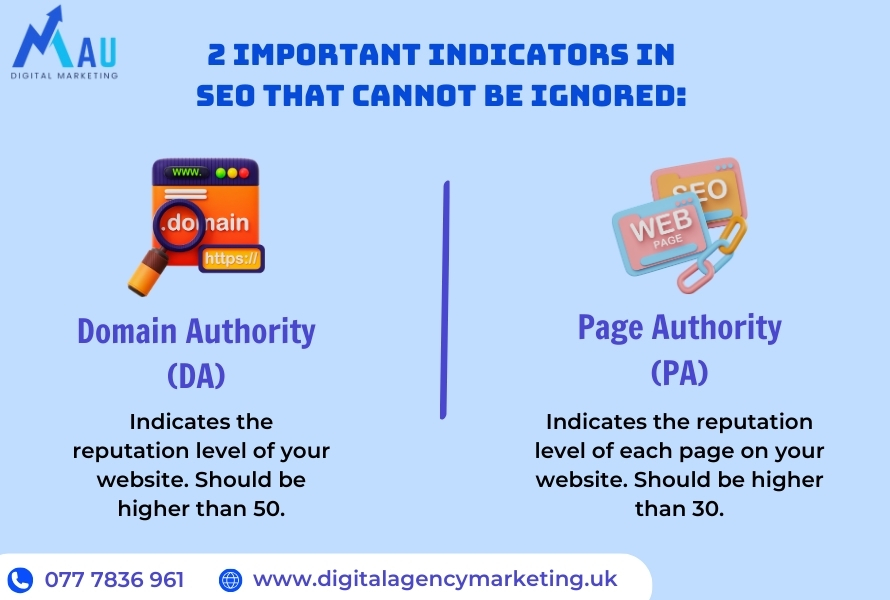
-
Domain Authority Index (DA): Indicates the reputation level of your website. Should be higher than 50.
-
Page Authority (PA) Index: Indicates the authority level of each page on your website. Should be higher than 30.
Note:
-
The above indicators are only reference levels, the actual standard level will depend on your goals and type of website.
-
You should monitor your website metrics regularly and make adjustments to improve website performance.
In addition, you can also refer to other website indicators such as:
-
Number of backlinks: Indicates the number of links from other websites to your website.
-
Click-through rate (CTR): Indicates the percentage of users who click on links to your website in search results.
-
Social networks: Shows the number of people following your website on social networks.
Website index tracking tool:
-
Google Analytics
-
Google Search Console
-
Ahrefs
-
SEMrush
Reach target customers
SEO helps you target potential customers searching for Nail services on Google. By using the right keywords in your website content and backlink strategy, you can attract people with real needs to your website.
Increase brand awareness
When your website appears regularly on SERPs, customers will increase brand awareness. This is a way to help you build credibility and trust with potential customers, thereby encouraging them to choose your services.
Increase revenue
The ultimate goal of SEO is to increase revenue for nail salons. If you attract more leads and increase conversions, you can increase your business's revenue and profits.
There are two main types of SEO:
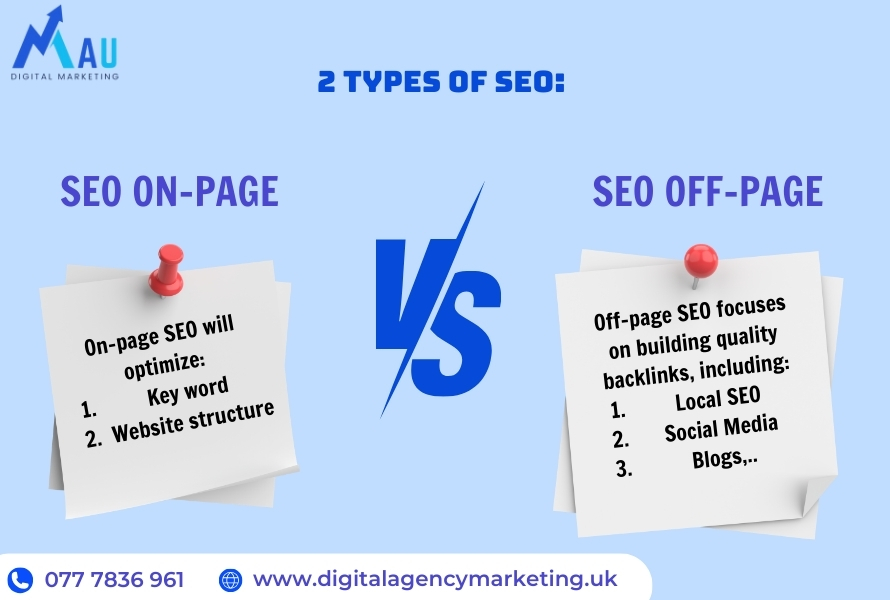
#1. SEO On-page:
On-page SEO focuses on optimizing elements on your website to increase visibility on SERPs for keywords related to the Nail industry. Important On-page factors include:
-
Keywords: Use primary keywords and appropriate secondary keywords in titles, meta descriptions, website content and alt tags of images, for example: “manicure”, “nail design”, “nail spa ",...
-
Website structure: Create a simple, easy-to-navigate and user-friendly website structure.
Normally the website will have pages:
- Homepage
- Category
- Post
- Product
- Page loading speed: Optimize page loading speed to enhance user experience, preferably under 3 seconds.
#2. SEO Off-page:
Off-page SEO focuses on building quality backlinks from reputable websites in the Nail industry to increase the reputation of your website.
There are many factors that affect Off-page SEO, but the 5+ most important factors are:
1. Backlink:
-
Number of backlinks: Number of links from other websites to your website.
-
Backlink quality: The quality of websites linking to your website.
-
Backlink relevance: The relevance of the websites linking to your website.
2. Social media:
-
Number of followers: Number of people following your website on social networks.
-
Engagement: How engaged users are with your social media posts.
3. Local SEO:
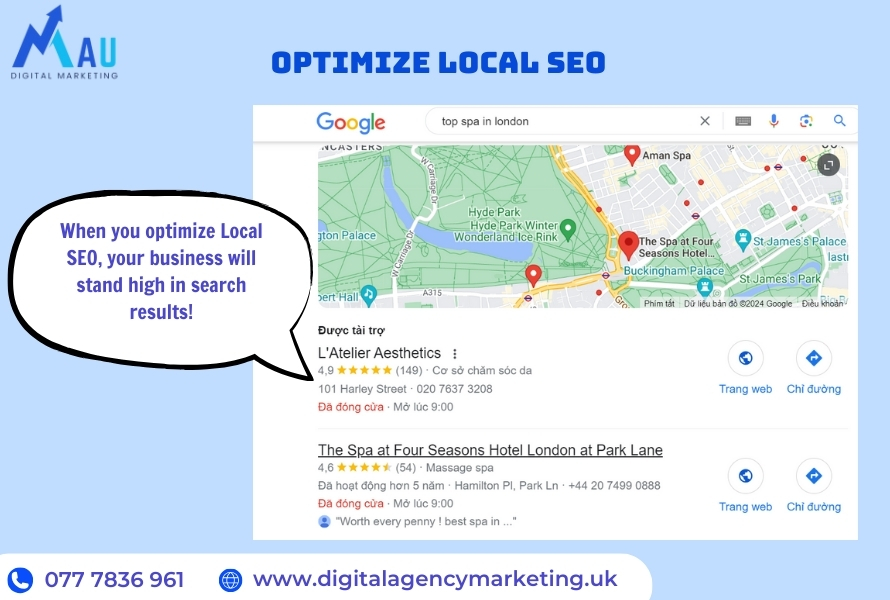
-
Google My Business listing: List your website on Google My Business.
-
Reviews: The quantity and quality of customer reviews about your website.
-
Citations: The quantity and quality of citations about your website from reputable sources.
4. Guest blogging:
-
Article quality: The quality of your guest blog articles.
-
Relevance of the article: How relevant the guest blog article is to your website.
-
Website reputation: The reputation of the website where you post your guest blog post.
5. Analysis:
-
Track SEO performance: Track your website's SEO performance with tools like Google Analytics and Google Search Console.
-
Competitor analysis: Analyze your competitors' SEO strategies to learn and improve yours.
In addition, there are a number of other factors that affect Off-page SEO such as:
-
Content sharing: The extent to which your website's content is shared on social networks.
-
Community participation: Your level of participation in online communities related to your website.
-
Link building: Your link building strategies.
The number of Off-page SEO factors is very large and there is no exact number. However, you should focus on the most important factors to achieve the best SEO results.
2 Popular SEO Planning Methods To Reach Top Google
SMART method
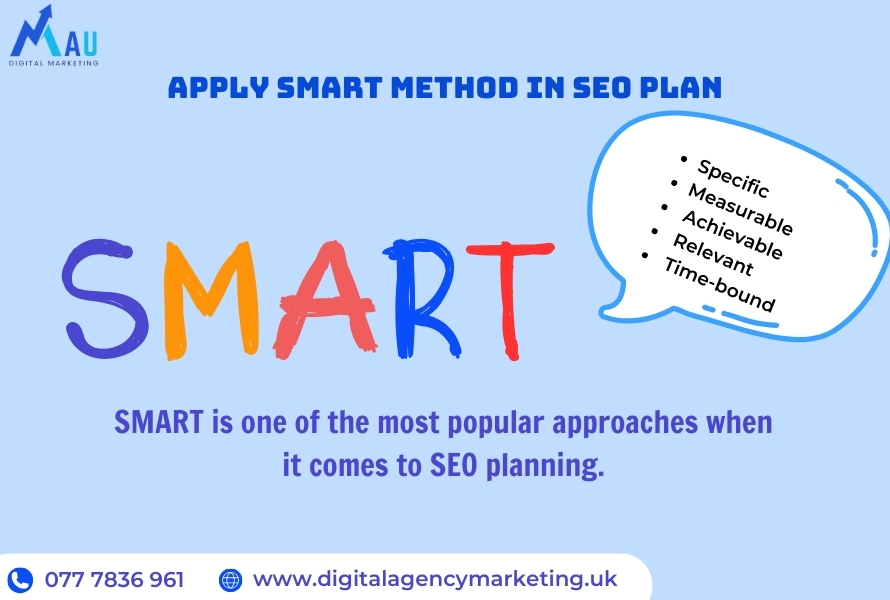
SMART is one of the most popular approaches when it comes to SEO planning. This method is abbreviated from:
-
Specific (Specifically),
-
Measurable (Measurable),
-
Achievable (Can reach),
-
Relevant (Fit)
-
Time-bound (There is a deadline).
To apply the SMART method successfully, SEO managers for nail salons need to set goals that meet the following 3 criteria:
-
Clearly.
-
Make sure your goals are measurable.
-
True to reality in a specific time.
Best of all, this SEO plan is consistent with the overall strategy of the business.
Advantage:
-
Goals are specific, measurable, achievable, realistic and timely.
-
Helps you focus on your most important SEO goals.
-
Easily track and measure SEO effectiveness.
Restriction:
-
It can be difficult to identify specific SMART goals.
-
Need to regularly adjust if the market and Google algorithms change.
PDCA method
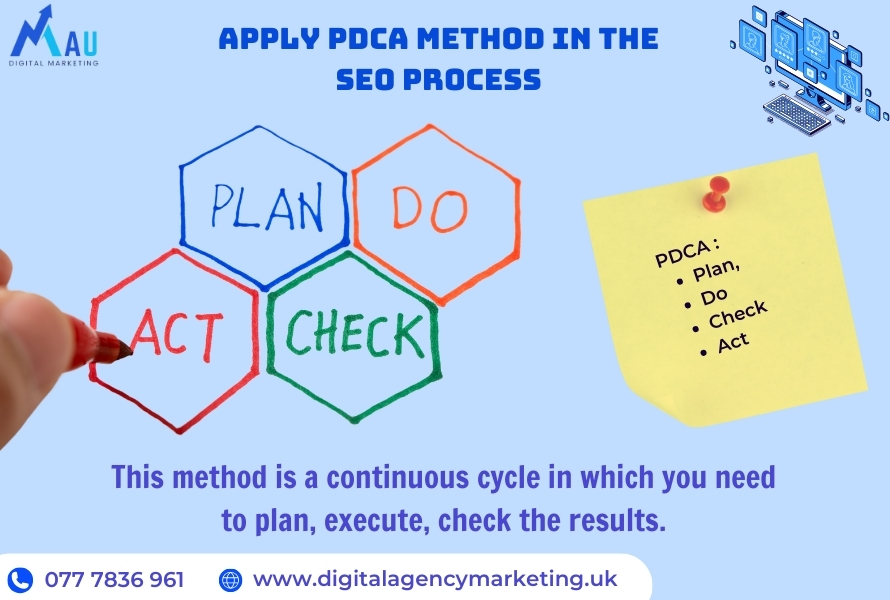
PDCA stands for:
-
Plan (Planning),
-
Do (Perform),
-
Check (Check),
-
Act (Act).
This method is a continuous cycle in which you need to plan, execute, check the results.
Through this, you can adjust and improve your SEO strategy. With this method, you can continuously evaluate and update your strategy based on actual data as well as market feedback.
Advantage:
-
It's a repeatable process that helps you continuously improve your SEO performance.
-
Helps you identify and fix errors in your SEO strategy.
-
Flexible and easily adapts to changes in the market as well as Google algorithms.
Restriction:
-
Takes a lot of time and resources.
-
Need in-depth knowledge of SEO to apply effectively.
6 Common Difficulties When Planning An Overall SEO Plan
#1. High competition
-
The SEO market is increasingly competitive: Many businesses invest in SEO, making it more difficult to achieve high rankings on Google.
-
Difficulty in finding potential keywords: Keywords with high search volume often have a high level of competition, requiring a lot of effort for effective SEO.
-
Need an effective and distinct SEO strategy: To surpass your competitors, you need a unique SEO strategy that suits your target market.
There are many factors that affect the difficulty of website SEO keywords, including:
-
Search volume: Keywords with high search volume will be more difficult than keywords with low search volume.
-
Competition: Keywords with many competitors will be more difficult than keywords with few competitors.
-
Website quality: A high-quality website will easily rank higher for difficult keywords.
-
Backlinks: Websites with many high-quality backlinks will easily rank higher for difficult keywords.
Here are some ways to sort the difficulty of website SEO keywords:
-
Use SEO tools: There are many SEO tools that provide keyword difficulty analysis.
-
Competitor analysis: Look at the websites that are ranking highly for the keywords you want to target.
-
Assess your own abilities: Determine whether you have enough resources to compete for difficult keywords.
In the first stage, you should deploy keywords with the following factors and characteristics:
-
Search volume: Keywords with medium or low search volume.
-
Competition: Keywords have few competitors.
-
Related: Keywords that are related to your website content.
-
Easy to rank: Keywords that are easier to rank for will help you attract traffic quickly.
Additionally, you should also focus on building high-quality content and backlinks to increase your ability to rank for harder keywords.
How to fix:

-
Look for vulnerabilities in competitors: Analyze your competitors' websites to identify weaknesses and opportunities that you can take advantage of.
-
Focus on long-term keywords: Focus on long-tail, lower-competition keywords to increase your chances of ranking.
#2. Search algorithms change frequently
-
Google continuously updates its search algorithm: This makes it difficult to keep up and adapt to changes. If you want to know about Google's updates, you can look.
-
Need to update SEO strategy regularly: To maintain effective SEO, you need to update your SEO strategy based on algorithm changes.
-
Difficulty in predicting SEO trends: Predicting future SEO trends is not easy, requiring research and continuous information updates.
How to fix:
-
Regularly update knowledge: Make sure you stay responsive to changes in search algorithms by reading newsletters and documents from reputable sources.
-
Create quality and flexible content: Create diverse, quality content to limit the impact of algorithm changes on the website's position in search results.
#3. Optimize user experience

-
Balance between SEO and user experience: Optimizing your website for SEO should not affect user experience.
-
Create high-quality and useful content: Content needs to meet the needs and desires of users, attracting them to access and interact with the website.
-
Improve page load speed and mobile usability: The website needs to have fast page loading speed and a user-friendly interface on all devices.
How to fix:
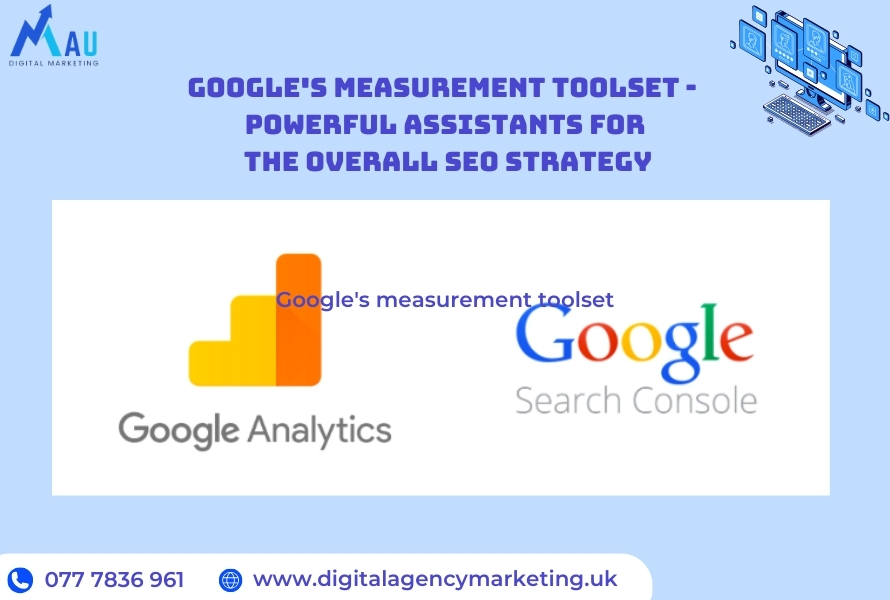
-
Ensure good user experience: Optimize your website to ensure a good user experience, including: fast page loading speeds, mobile-friendly design, and engaging content.
-
Using data from Google Analytics: Use data from Google Analytics to understand user behavior, adjust your website accordingly.
#4. Complete and effective keyword research
-
Identify suitable target keywords: Choose keywords that match your SEO goals, target market and SEO capabilities.
-
Use effective keyword research tools: There are many free and paid keyword research tools that help you find and analyze potential keywords.
-
Update user search trends: User needs and search trends change over time, so regular updates are needed to choose appropriate keywords.
How to fix
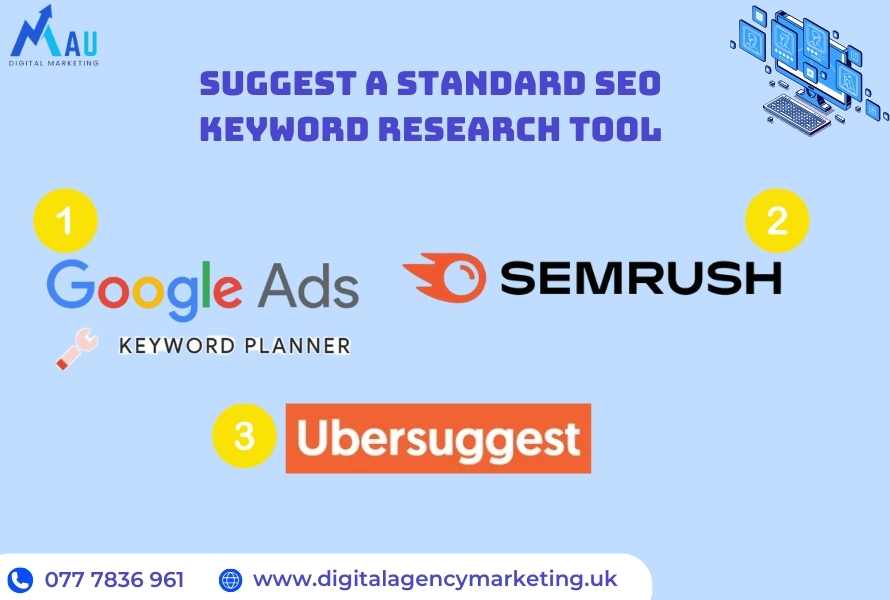
-
Use many keyword research tools: Use tools like Google Keyword Planner, SEMrush, and Ubersuggest to research keywords, ensuring you don't miss any important keywords.
-
Analyze and adjust: Perform regular keyword analysis to identify new keywords and adjust your keyword strategy over time.
#5. Content challenges
-
Create high-quality and unique content: Content needs to bring practical value to users, attracting them to read and share.
-
Update content regularly: Regularly updating content keeps the website fresh and attracts users to return.
-
Optimize content for SEO: Content needs to contain target keywords and be optimized according to SEO factors.
For example: You want to boost SEO from "beautiful spring 2024 nail designs" but in your articles use:
-
Content and images of summer nail designs. Google will evaluate: you are inconsistent in content.
-
Content and images of spring nail designs from other websites. Google will evaluate the quality of the website as poor and copy other pages.
-
Content and images of spring 2022, 2023 nail designs. Google will evaluate: inconsistent in content, not updated with new content.
How to fix:
-
Create quality and unique content: Invest time and resources to create quality, unique content that readers really care about and want to share.
-
Use content diversification: Create diverse content including: text, images, videos and interactive content to attract and retain readers.
#6. Performance monitoring and measurement skills
-
Install SEO effectiveness measurement tools: Google Analytics, Google Search Console, Ahrefs, SEMrush,...
-
Track important SEO metrics: Website traffic, keyword rankings, conversion rates,...
-
Analyze data and adjust SEO strategy: Based on the data collected, you can adjust your SEO strategy to achieve better results.
How to fix:
-
Using measurement tools: Use tools like Google Analytics, Google Search Console, and other SEO tools to measure the performance of your SEO campaign.
-
Set goals and track: Set specific goals and measure results regularly to ensure your SEO campaign is going according to plan and delivering the expected results.
4 Notes To Help Business Owners Optimize Their Overall SEO Plan
The SEO plan must be consistent with the business plan of the enterprise
Google SEO optimization guidance service at MAU Agency found:
-
The SEO plan must be closely linked to the overall business plan of the enterprise.
-
The goals and strategies of the SEO campaign must clearly reflect the business goals of the enterprise. For example, increasing sales, expanding markets or building brands.
-
Only when an SEO plan is designed to support key business goals can it be truly meaningful and effective.
Objectively evaluate and compare the website with competitors in the same industry
Objectively evaluating and comparing your website with competitors in the same industry is an important part of the SEO planning process. You need:
-
Identify strengths and weaknesses as well as potential opportunities and challenges that the website may encounter.
-
Clearly define your position compared to competitors in the same industry
Evaluation helps you identify areas that need improvement and areas that need to be enhanced to improve your SEO performance.
Accurately identify user search trends
One of the most important factors when planning SEO is accurately determining user search trends in your industry. Business owners need:
-
Research keywords thoroughly to understand potential customers' behavior when they search for information related to products/services.
-
Optimize your website content to increase your chances of appearing in search results, attracting a large number of potential customers.
Proactively check your website domain name
You can check the domain name using the Whois tool:
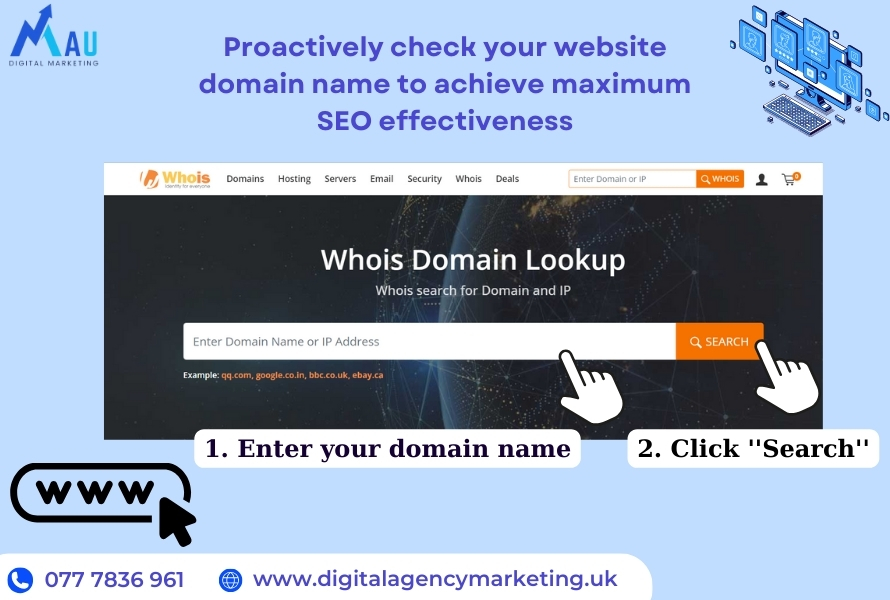
-
Visit the website https://www.whois.com/whois/.
-
Enter your website domain name in the search bar.
-
Click the "Search" button.
The Whois tool will display detailed information about your domain, including:
-
Owner name: The name of the person or organization that owns the domain name.
-
Contact information: The domain owner's contact information, including email address and phone number.
-
Registration date: The date on which the domain name was registered.
-
Expiration date: The date on which the domain name will expire.
-
Domain status: The current status of the domain, such as active or pending.
Domain checking is extremely important to ensure your domain name is free from legal issues, is not associated with fraudulent/spam activities, and is not ranked low due to technical issues or inconsistent content.
A trustworthy domain name that is highly rated on search engines will help enhance the reputation and reliability of the website, thereby facilitating the effective implementation of an SEO strategy.
Conclusion:
In general, making an overall SEO plan is an important step to improve SEO effectiveness, conquering the business goals of businesses in general and of nail salon owners in particular. Hopefully through the above article, you have a better understanding of how to plan SEO as well as information surrounding this topic. Please continue to follow and accompany us to read more useful information!
The author has consulted information from the following sources:
-
Drew Fortin. (2023). How to Create an SEO Strategy for 2023 [Template Included]. Hubspot.com. https://blog.hubspot.com/marketing/seo-strategy.
-
Jami Oetting. (2023). The Ultimate Guide to SEO in 2023. Hubspot.com. https://blog.hubspot.com/marketing/seo
--------------------
DIGITAL AGENCY MARKETING UK
Add: 133 Creek Road, London SE8 3BU
Tel: 077 7836 9618
Email: admin@digitalmarketingagency.uk
Website: https://digitalagencymarketing.uk/
Tin tức khác
10 Comprehensive Steps to Craft an SEO Strategy and Dominate the Market in 6 Months
Pricing 10+ Type of SEO Cost That Business Owners Should Pay Attention
Top 10+ SEO KPIs | 6+ Determination Steps, 5 Notes, 4 Benefits You Cannot Skip
Can Business Owners Become SEO Experts?
Top 10 SEO Mistakes Business Owners Need to Avoid


